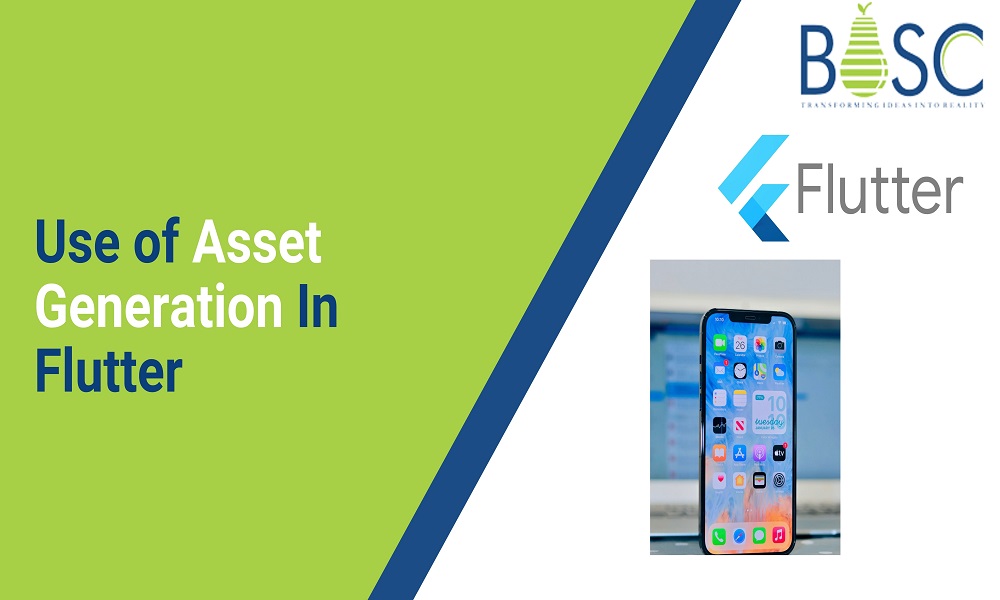Asset generation in Flutter is a form of the process, so the controls come in certain important elements: images, methods, and events. Regarding asset type, the user interface element is created in such form by using the toolbox control.
The methods have described the assets, methods cause the asset to do some process, and the events can do their process with the help of methods. The control images can be moved, resized, and customized under their settings.
With the help of image value, it can hold with the help of asset and their caption to be needed as an effective impact. And those images are to set under the design time under the images of such windows it can run by those program code statements.
The asset name is to be customized so the user can change it, and the image values are to characterize as per the user’s wants and the value to be set as a new image.
Advanced forms in asset generation in Flutter
In the advanced things, you can add menus and sub-menus in your application by adding cut, copy and paste options to be presented in that form. Anchoring and docking such controls are to be there in such forms.
Now you can add some menus and sub-menus in your generating Flutter application development so that the control to replace the newer one. And the relav controls to be used as per usage. They have different functions in the menu strip, providing a menu system using your form.
In the tool strip menu item, you can represent the selectable option and display a menu and context menu strip. With the help of the tool strip menu item controls, it will add functionality to the previous versions.
The asset methods must be exposed to adding such cut, copy and paste functionalities to be preset in the application. Those assets must be available at class methods to correctly place the data. So, With the help of a clear option, you can remove the data from your asset.
You can use a converted data form when you have data in your asset in a specified format. Using the asset contains an image tag. You can include the data on the asset that can become under bitmap format to be converted to your format.
Collecting the data in the asset, various sources are there. Using such data, you can make and manage your assets. Anchoring allows the user to control such edges of the whole container in an anchor position. The image of anchor to be controlled classes allows and sets your values for this image.
Also Read: Adding SVG Images In Flutter App
Overview of the asset generation in Flutter framework
When you see that technology has improved daily, you can update those things. Only then can you get the best things in your business. So that you must learn the basics of programming; under this, you can succeed at any point.
Now asset generation is regarded as extremely dependent on solutions to those renders that can get outstanding security which means they will get exclusive inter portability.
Using asset generation in the Flutter programming language immensely benefits and enhances matters in the most remarkable ways. Many large organizations can prefer to use this language, and it will help to meet their complex needs and their core matters.
With the rise of many experienced specialists worldwide, these programming languages can also grow much more in the deep roots in that you can get things in a robust presence. And it is very true when compared to other kinds of open source generates, and they will score high in terms of qualities, abilities, knowledge, and experiences.
Also Read: Flutter Vs. React Native: Which is Best For your Project in 2023?
Basic control elements of asset generation in Flutter
Using this programming language makes an excellent generation for large-size projects. At that time, you can find out and juggle such things, and with the help of technology with advancements, there are always some issues to be follow.
Then you can make it better protection when the purpose of the security asset provides the best features. It is based on this ability to extend across such long time frames to be support. Asset programming language helps reduce the amount of code need to create a large application that is support for a long extent.
This application is rendere secure so that it helps to build windows per application and also provides the authentication configuration.
Asset generation in Flutter makes room for enhance performance by leveraging such benefits in just-in-time compilation, native optimization, caching services, and binding things to done. Those frameworks for app development come with a rich toolbox that designers can help in asset generation in the Flutter environment.
Also Read: Which are the Best Flutter Widgets for App Development in 2022?
Environmental setup of asset generation in Flutter
In this session, you can learn about the tools available for creating applications using asset generation in Flutter. You already know that it is part of the asset framework and will be used for writing applications under asset coding so that you can use those Flutter app development tools for running such programs and for understanding such related asset generation in the Flutter framework.
The asset framework is a revolutionary platform that helps you to write the application coding for various services. It will support multi-platform applications. This framework is designe to used in any language to access and communicate with one another.
This framework consists of enormous library codes that the client can use for asset-oriented methods. Microsoft provides the integrated generation environment of asset generation in Flutter; they have tools for such programs so that you can make it for asset generation in Flutter.
These services are free. These tools write in asset programs with a simple command line. It is to be trimmed down such versions of asset generation in Flutter that can look at with the same feel. It can retain such features in asset generation in Flutter.

Conclusion
In this article, we have discussed the brief description of asset generation in Flutter. However, it enables you to add many resources to your app by enhancing its functionality and aesthetics. However, leveraging Flutter’s in-built asset management features will efficiently manage and utilize resources to develop engaging and visually appealing apps. Moreover, you can hire Flutter developers from a leading Flutter app development company who will give you 100% successful solutions with the help of their expertise and knowledge.
Frequently Asked Questions (FAQs)
1. How to load assets faster in Flutter development?
To load the assets images faster, make use of precacheimage(). Additionally, This method will prefetch the images into an image cache, and after that, the Image is use wherever it is needed, and it will be loaded more quickly. But, the ImageCache does not allow it to hold huge images.
2. What is the differentiation between AssetImage and image asset?
The Image is the stateful widget and Image. The asset is only the constructor, which you can directly use on the widget tree. Therefore, AssestImage is the ImagePrvider responsible for obtaining the picture of a particular path, and you can also check the Image’s source code.
3. What is the asset bundle in Flutter development?
Finally, Asset bundle consists of resources, like images and strings, and can be used by a mobile application development. However, access to resources is asynchronous so that they can transparently loaded over the network or from a local file stem without blocking an app’s user interface and experience.
Book your appointment now




